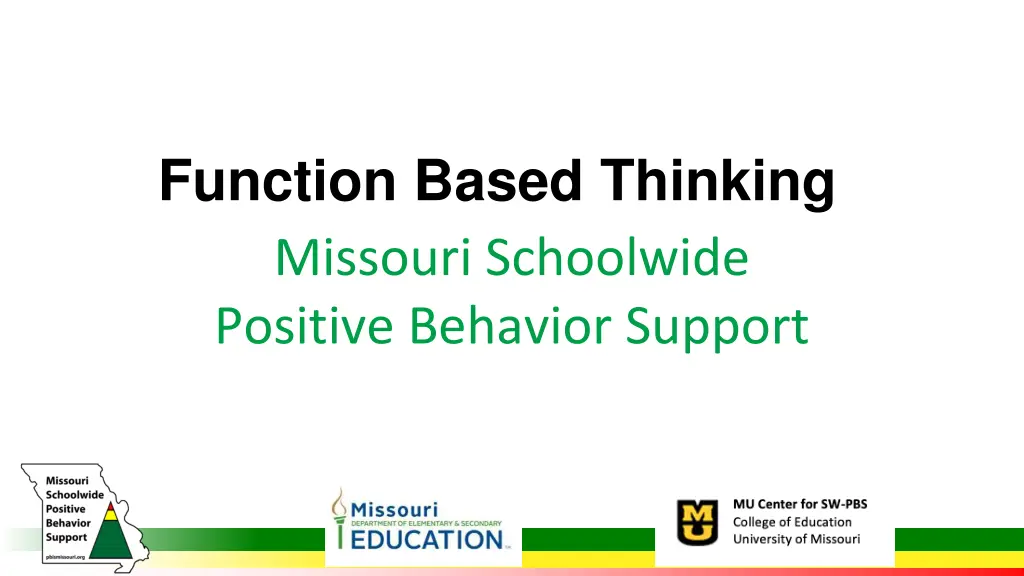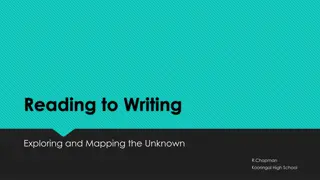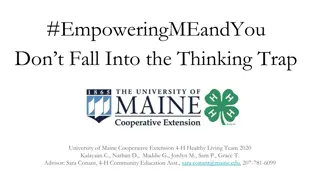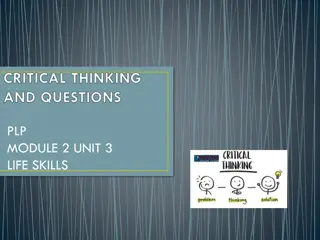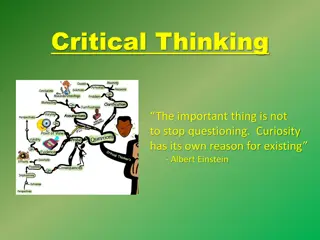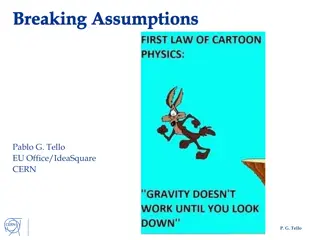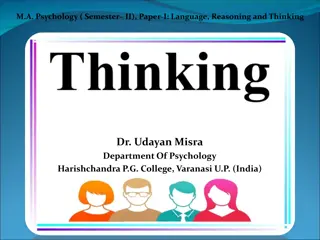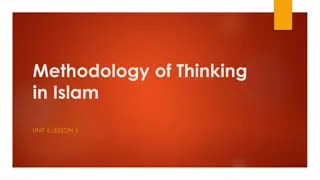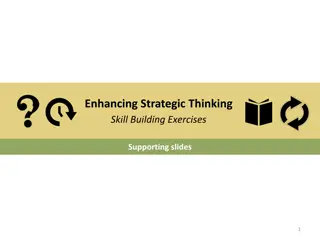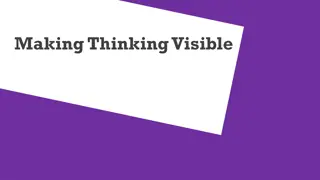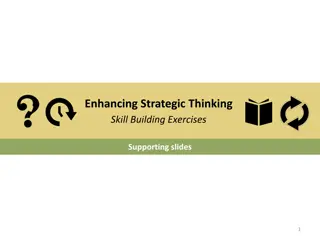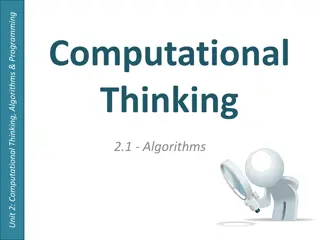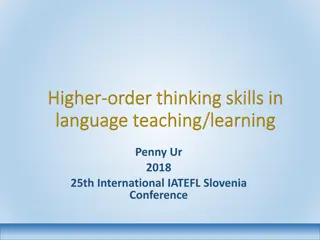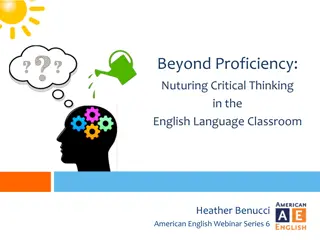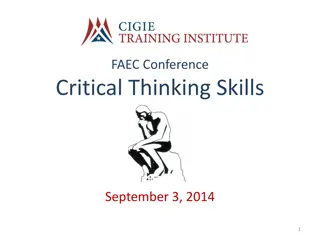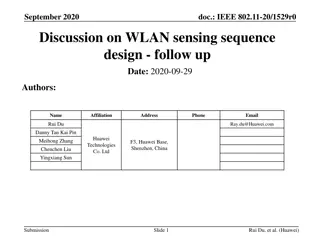Function Based Thinking
Function-based thinking in Missouri Schoolwide Positive Behavior Support, emphasizing data-based decision-making, mission clarity, and effective teaching practices. Understand how behavior is related to the environment and how environmental interventions play a key role in shaping expected behaviors. Explore the functions of behavior and the ABCs of behavior (Antecedent, Behavior, Consequence) to create a positive schoolwide environment. Discover how Function-Based Thinking incorporates wise interventions and situation crafting to nurture belonging and self-worth.
Download Presentation

Please find below an Image/Link to download the presentation.
The content on the website is provided AS IS for your information and personal use only. It may not be sold, licensed, or shared on other websites without obtaining consent from the author. Download presentation by click this link. If you encounter any issues during the download, it is possible that the publisher has removed the file from their server.
E N D
Presentation Transcript
Function Based Thinking Missouri Schoolwide Positive Behavior Support
Common Language Common Experience Common Vision Data Based Decision-making Mission Clarifying Expected Behavior Vision Teaching Expected Behavior Students & Family Goals Encouraging Expected Behavior Non-Certified Staff District Leadership Team Discouraging Unexpected Behavior Certified Staff Building Leadership Team Effective Teaching & Learning Practices (ETLPs) Administration Common Philosophy & Purpose Function-based Thinking & Human Motivation Theory
Behavior is functionally related to the environment. Behavior = what the an individual does (expected or unexpected). Environment = all that happens before, during, and after the individual s behavior.
Environmental Interventions Are Key Environments that increase the likelihood expected behaviors will occur/recur are guided by a core set of effective practices that are implemented with fidelity, consistency and equity.
A-B-Cs at work Schoolwide Antecedent Behavior Consequence Events that happen immediately before and trigger a behavior. Example: Hallway rules and procedures are established and taught. Teacher prompts, Remember to stay right in the hallway. An observable act. What the student does. The actions or reactions to the antecedents. Example: Student keeps voice quiet, body to self and walks on the right. The resulting event or outcome that occurs immediately following the behavior. Impacts future occurrence of the behavior. Example: Teacher gives specific verbal recognition. Expected hall behavior increases.
FBT = Wise Interventions & Situation Crafting Wise Interventions: - interventions that nurture people s belonging and self worth. pg xiii ...are ideally the right small thing, just what is psychologically needed for a specific person in a specific time and place to set them on a better path. p 45 Situation crafting: shaping a situation, even in seemingly minor ways, in order to foster belonging. pg 3 What is the next smallest thing you can do to achieve the outcomes you have? ~ Dr. Rob Horner, National Center on PBIS originating co-founder
Examples of FBT / Situation Crafting in Practice - Community 1 2 3 6 5 4
Function Based Thinking Schoolwide Application
Examples of FBT / Situation Crafting in Practice - Schools 3 1 2 4 5 6
FBT and Schoolwide Antecedents What conditions will encourage student use of the expected replacement behavior chosen from the schoolwide MATRIX ? How will expectations be taught/re-taught? For Teachers and Staff ____ Non-Classroom Routines Defined & Taught to Fluency ____ Establish schoolwide Common Philosophy & Purpose; develop organization wide knowledge of Function Based ____ Classroom Procedures & Routines Defined & Taught to Fluency Thinking & Human Motivation Theory ____ Lesson Plans for Schoolwide Expectations ____ Staff Meetings ____ Staff memos, emails, newsletters, and handbooks ____ Schoolwide Teaching Schedule ____ Active Supervision ____ Collaborative Teams > departmental or grade level meetings ____ Pre-corrects (reminders to follow expectations) ____ Schoolwide Signage ____ Communication with Students and Families (e.g., handbooks, social media, morning announcements, PTA meetings, school events, etc.) ____ Scheduled Staff PD (e.g., New Staff Orientation, Back to School events) For Students ____ Direct instruction = tell, show, practice, feedback. ____ Embedded within academic curriculum. ____ Rationale -Tied to everyday life in the REAL WORLD
FBT and Schoolwide Consequences How will adults consistently provide a continuum of positive feedback for schoolwide expected /matrix behaviors and classroom expectations and rules? How will adults consistently respond to unexpected behaviors (social errors) that includes a continuum of corrective interventions? Plan for Effective Positive Feedback: ____ Positive ____ Specific ____ Immediate ____ Genuine ____ Minimum Ratio of 4:1 Plan for Effective Discouraging Unexpected / Error Correction: ____ Immediate ____ Specific ____ Private/Quiet ____ Calm ____ Quick Schoolwide Plan including: ____ Free & Frequent Use everyday, in every setting Schoolwide Continuum to Include: ____ Prompt ____ Redirect ____ Intermittent Award Occasionally ____ Re-teach ____Provide Choices ____ Occasional Quarterly or Year Long Goal ____Conference ____Short Removal ____ Performance Feedback for Staff
FBT - Schoolwide Planning What Essential Components* of SW-PBS does your building have in place to serve as Antecedent Interventions? How will/do you monitor implementation fidelity? What Essential Components* of SW-PBS does your building have in place to serve as Behavioral Interventions? How will/do you monitor implementation fidelity? What Essential Components* of SW-PBS does your building have in place to serve as Consequence Interventions? How will/do you monitor implementation fidelity? *Common Philosophy & Purpose - Leadership - Clarify - Teach - Encourage - Discourage - DBDM
FBT / Situation Crafting Schoolwide Planning Antecedents Expected Behaviors (What Expected Behaviors does our school need to focus on?) Consequences Keep Doing: Setting the stage for beginning of the year: Keep Doing: Tweak: Tweak: Commonly needed during the school year: Rethink - Start: Rethink - Start:
Function Based Thinking Classroom Application & the ETLPs
Common Language Common Experience Common Vision Data Based Decision-making Clarifying Expected Behavior Mission Teaching Expected Behavior Vision Students & Family Encouraging Expected Behavior Goals Non-Certified Staff Discouraging Unexpected Behavior District Leadership Team Effective Teaching & Learning Practices (ETLPs) Certified Staff Building Leadership Team Classroom Expectations & Rules Administration Common Philosophy & Purpose Classroom Procedures & Routines Classroom Encouraging Expected Behavior Function-based Thinking & Human Motivation Theory Classroom Discouraging Unexpected Behavior Classroom Active Supervision Classroom Opportunities to Respond Classroom Activity Sequencing & Choice Classroom Task Difficulty
What are the ETLPs? Effective Teaching & Learning Practices The research-based practices demonstrated to increase the likelihood of expected behavior and decrease unexpected behavior, while increasing academic learning time.
Effective Teaching & Learning Practices (ETLPs) 1. Classroom Expectations & Rules 2. Classroom Procedures & Routines 3. Classroom Encouraging Expected Behavior 4. Classroom Discouraging Unexpected Behavior 5. Classroom Active Supervision 6. Classroom Opportunities to Respond 7. Classroom Activity Sequencing & Choice 8. Classroom Task Difficulty 8. Classroom Task Difficulty 1. Classroom Expectations & Rules 2. Classroom Procedures & Routines 3. Classroom Encouraging Expected Behavior 4. Classroom Discouraging Unexpected Behavior 5. Classroom Active Supervision 6. Classroom Opportunities to Respond 7. Classroom Activity Sequencing & Choice
MO SW-PBS Student Support Model The triangle is not to scale! The foundational components schoolwide and at the classroom level need to be implemented with fidelity, consistency and equity in order for the advanced tier supports to be implemented with high levels of success. Without fidelity, the number of students who appear to need advanced tier supports will easily outstrip the capacity to deliver tiered interventions.
Classroom Effective Teaching & Learning Practices Antecedent Behavior Consequence Establish clear classroom expectations. Increase predictability through clear procedures and routines. Teach and review expected behaviors and routines. Use pre-corrects to prompt students about expectations. Actively supervise moving, scanning, and interacting. Provide a high number of Opportunities to Respond (OTRs) to academic material with high rates of success. Intersperse brief/easy tasks among more difficult ones. Provide opportunities for choice. Increase student engagement with learning and task completion while displaying expected social behaviors. Provide high rates of positive specific feedback. Use a full continuum of positive consequences. Use a full continuum corrective consequences.
Effective Teaching & Learning Practices (ETLPs) & FBT Applying FBT in the delivery of ETLPs, think whole class as well as individual student.
ETLP Teacher Tools Link to ETLPs on the Web
FBT / Situation Crafting in MY Classroom Antecedents Expected Behaviors (What classroom expectations and/or procedures & routines do I need to focus on?) Consequences Keep Doing: Setting the stage for beginning of the year: Keep Doing: Tweak: Tweak: Expectations to commonly teach/re- teach during the school year: Rethink - Start: Rethink - Start:
